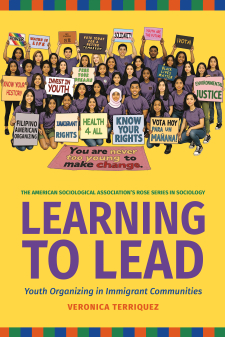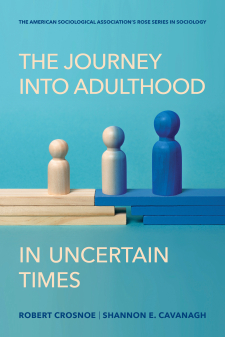Second Generation Trajectories
Beginning in 1994, the Foundation’s program of research on immigration sought to look beyond the immediate costs and benefits of immigration to the United States to examine the long-term prospects of members of a new and rapidly expanding second generation—the children of post-1965 immigrants, who were born in the United States or were brought from abroad at an early age. A large number of researchers, many with Foundation support, have looked at how these new Americans are faring in terms of education, jobs, family formation, identity, and their mobility within U.S. society. This research has led to a substantial body of literature that suggests that, while some second-generation immigrants still have to catch up with their native-born peers, the great majority of the second generation experiences significant socioeconomic mobility compared to their parents’ generation and do at least as well as the descendants of past cohorts of immigrants. Nevertheless, debate persists about what represents progress and the reasons some national-origin groups move ahead while others are left behind.
Sociologist Roger Waldinger and Renee Reichl Luthra (both of University of California, Los Angeles) will study ethnicity, politics, and socio-economic mobility among the contemporary immigrant second generation, drawing on data from three large original data-collection projects funded by the Russell Sage Foundation: the Children of Immigrants Longitudinal Study (CILS), the Immigration and Intergenerational Mobility in Metropolitan Los Angeles (IIMMLA) study, and the Immigrant Second Generation in Metropolitan New York (ISGMNY) study. Examined in concert, the data may enable the investigators to analyze the variation in second generation outcomes and assess the factors that determine whether immigrant offspring move beyond, move ahead, or simply reproduce their parents’ socioeconomic status. The three surveys are ideally suited for the task; they were motivated by shared intellectual concerns and exhibit considerable overlap in the range of topics addressed and the specific questions asked. They share the advantages of large sample size, targeted oversampling of a variety of second-generation groups, and detailed information about both early-childhood experiences and a range of socioeconomic outcomes in early- to mid-adulthood.
In the first part of the analysis, Waldinger and Luthra will revisit the debate over the direction of inter-generational mobility by modeling the educational and occupational outcomes of second-generation young adults compared to their parents, along with other outcomes of interest, such as timing of first birth, history of arrests, incarceration, or gang activity. They will use mobility tables and event history analysis to track movement between generations (up, down, or lateral), allowing for intergenerational associations to differ across the different national origin groups. In addition, the investigators will examine the mechanisms behind observed interethnic differences in mobility trajectories. Besides assessing shifts in inter-ethnic differences from the first to the second generation, they will examine how those interethnic differences vary from one dimension to another and the extent to which such differences can be accounted for by social class, ethnic ties, or neighborhood factors. This analysis will use data from all three surveys.
In the second part of the data analysis, Waldinger and Luthra will move beyond the examination of educational, occupational, fertility, and delinquency outcomes to consider the effects of retention of ethnic ties, and of neighborhood context, on structural assimilation and on socialization into the American polity. The investigators will use New York and Los Angeles data to examine whether and how ethnic ties change the impact of low socioeconomic background on second-generation achievement. In addition, using IIMMLA data, Waldinger and Luthra will explore whether lack of U.S. citizenship or undocumented status is associated with long-term negative outcomes on acculturation and structural assimilation.
In the third and final part of the analysis, the investigators propose to move from a consideration of structural integration trajectories, and the effects of intergenerational transfer of ethnic ties for political and civic engagement, to an examination of the puzzle of exceptionally high achievement among the children in some immigrant groups with little or no formal parental education. In particular, they would seek to determine the relative contribution factors such as school quality versus parental expectations and the strength of ethnic attachments in the exceptional success of second-generation Chinese in New York and Los Angeles.





